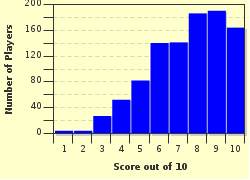Quiz Answer Key and Fun Facts
1. Welsh Rarebit, which essentially consists of melted cheese on toast, was originally known by which misleading name?
2. What ingredient(s) would you NOT need to make an Egg Cream?
3. Although still the subject of some debate, which of the following foods with a country or locality in its name in all likelihood did NOT originate in that place?
4. In 1897, C.W. Post created a breakfast cereal which he marketed under the name "Grape-Nuts". What was it made from?
5. A Boston Cooler is an ice cream soda made from vanilla ice cream and ginger ale. Where was it invented?
6. In some countries, a London Broil refers to a flank or round steak which has been marinated and broiled (or grilled) and then sliced across the grain into thin strips. Where did this dish originate?
7. What's misleading about the name "Long Island Iced Tea"?
8. The Bombay Duck is a delicacy in Anglo-Indian cuisine, and is usually preserved and enjoyed with curries. Despite its name, it is not a duck. What would be a more accurate name?
9. Which of the following terms refers to the pancreas and thymus glands of calves, pigs or lambs?
10. How many times are Refried Beans fried?
Source: Author
jmorrow
This quiz was reviewed by FunTrivia editor
ozzz2002 before going online.
Any errors found in FunTrivia content are routinely corrected through our feedback system.

